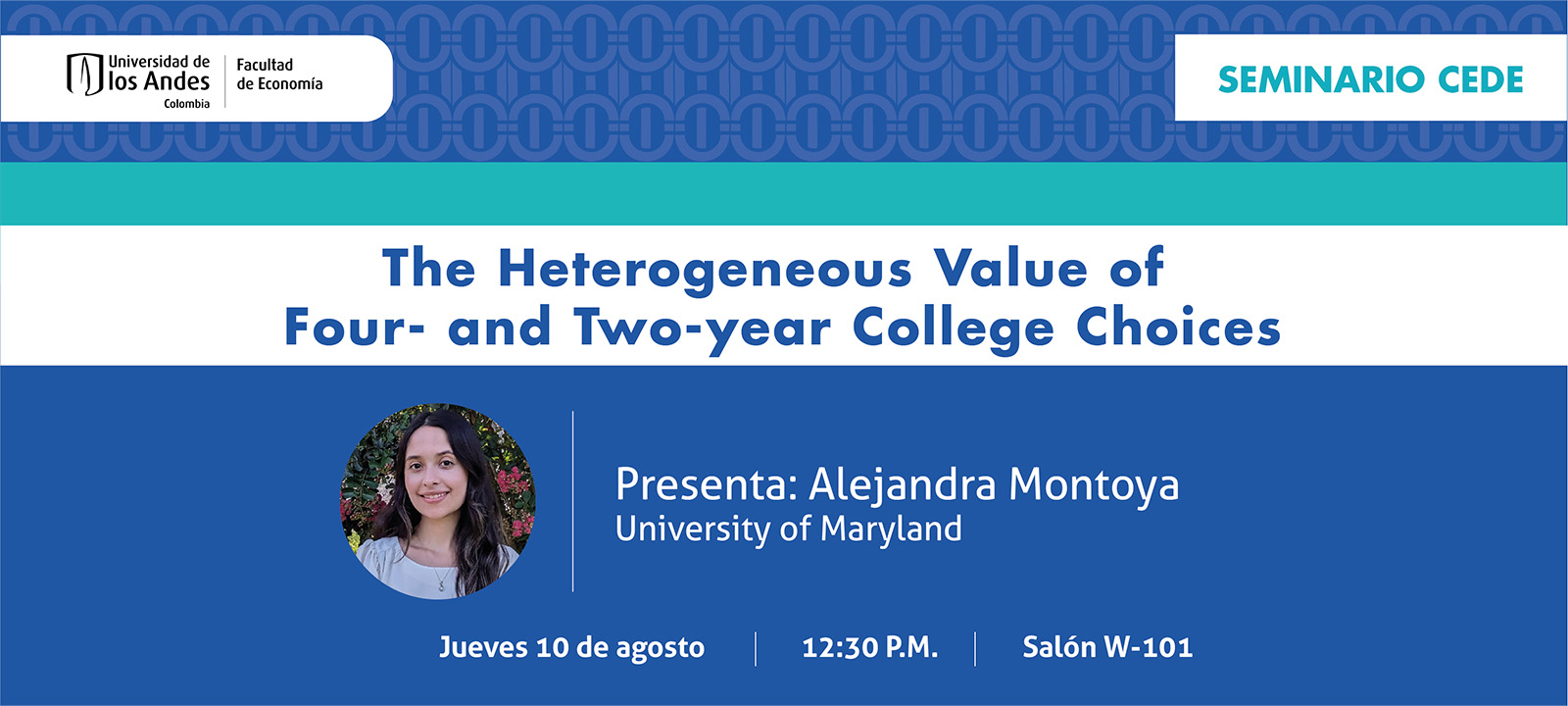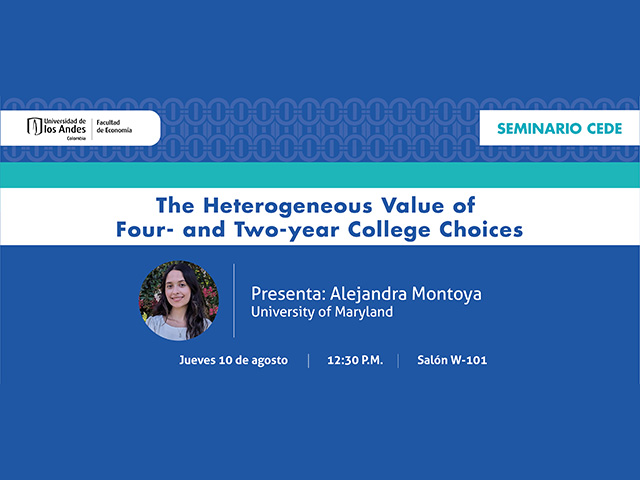Seminario CEDE - Alejandra Montoya

This paper uses a dynamic Roy model and data from the National Longitudinal Survey of Youth 1997 to analyze the decision to pursue two-year or four-year college choices and estimate their associated net value. In this model, the net value varies across three dimensions of abilities: cognitive, socio-emotional, and mechanical, which are estimated using a measurement system. I focus on characterizing the average individual who would conclude that there was a schooling path different from the one she chose that would have led to higher net value. This classification is derived from comparing simulated net values, which consider potential earnings and costs, associated with each schooling path. The results provide valuable insights into the implications of credit constraints and regional characteristics on achieving the highest net value. In particular, short- and long-term credit constraints are important factors preventing people from achieving the highest net value as four-year graduates. Moreover, four-year and high school graduates finding higher net value in a two-year degree are more likely to come from and live in rural areas. Finally, there is evidence of a strong sorting for the cognitive and mechanical abilities but only weak sorting for the socioemotional ability.

